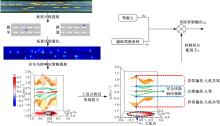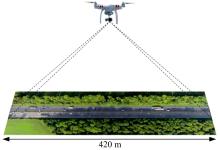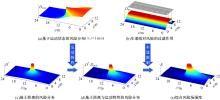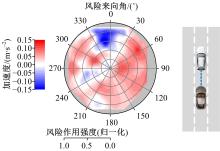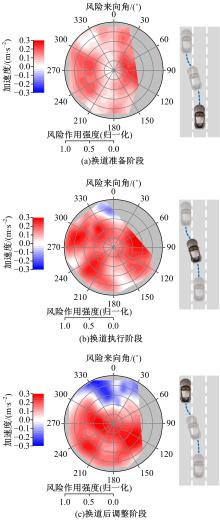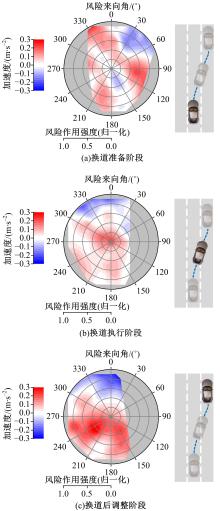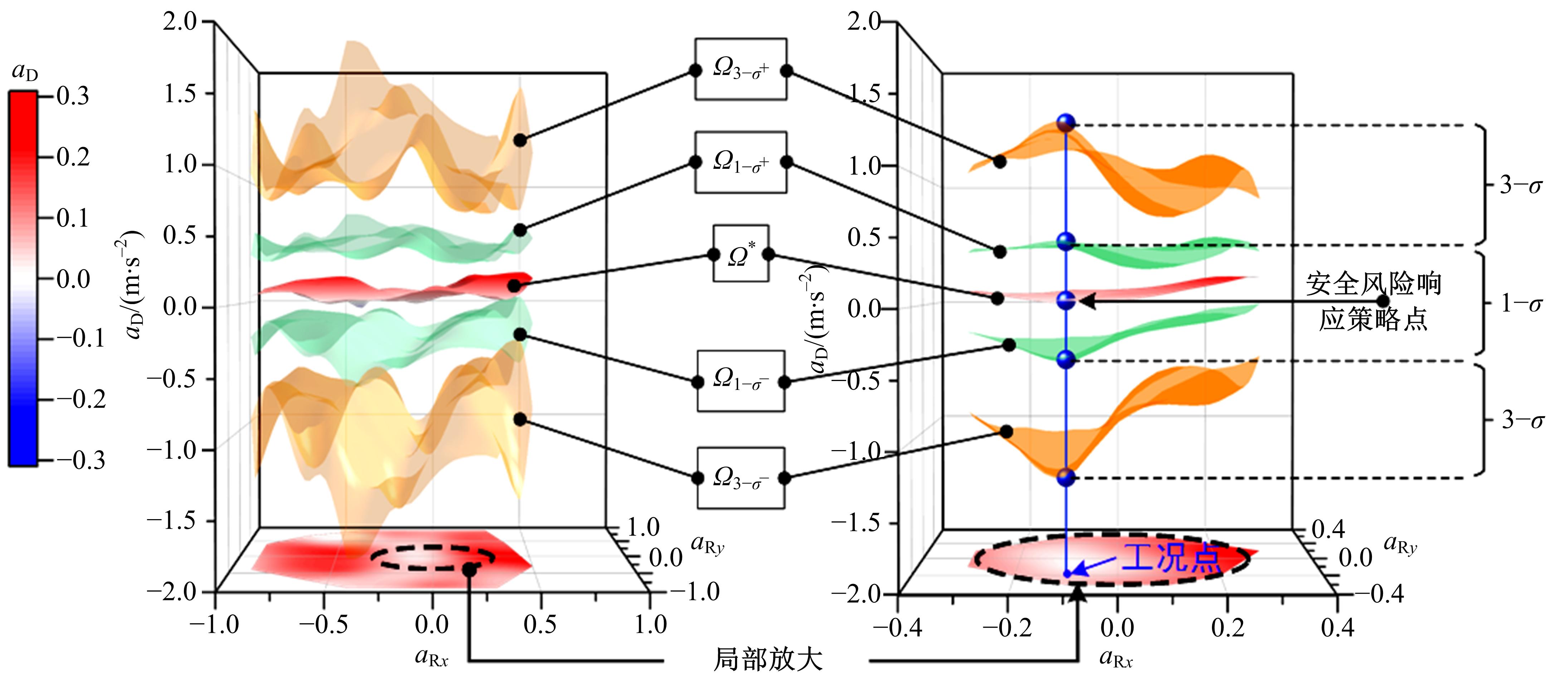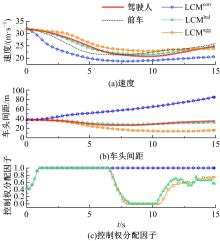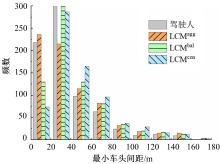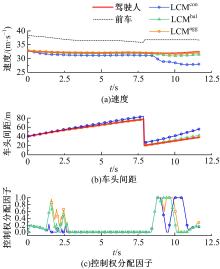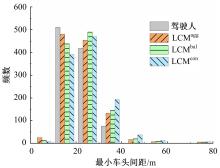Journal of Jilin University(Engineering and Technology Edition) ›› 2021, Vol. 51 ›› Issue (3): 799-809.doi: 10.13229/j.cnki.jdxbgxb20200092
Previous Articles Next Articles
Man⁃machine shared driving model using risk⁃response mechanism of human driver
Ren HE1( ),Xiao-cong ZHAO1,Yi-bin YANG2,Jian-qiang WANG2(
),Xiao-cong ZHAO1,Yi-bin YANG2,Jian-qiang WANG2( )
)
- 1.School of Automotive and Traffic Engineering,Jiangsu University,Zhenjiang 212013,China
2.State Key Laboratory of Automotive Safety and Energy,Tsinghua University,Beijing 100084,China
CLC Number:
- U491.25
| 1 | Walch M, Colley M, Weber M. Driving-task-related human-machine interaction in automated driving: towards a bigger picture[C]∥11th International Conference on Automotive User Interfaces and Interactive Vehicular Applications: Adjunct Proceedings—AutomotiveUI'19, Utrecht, Netherlands, 2019:427-433. |
| 2 | Blaschke C, Breyer F, Färber B, et al. Driver distraction based lane-keeping assistance[J]. Transportation Research Part F: Traffic Psychology and Behaviour, 2009, 12(4):288-299. |
| 3 | Chen L, Yang C. Control authority determination of a vehicle lane keeping assist controller[C]∥2009 IEEE Intelligent Vehicles Symposium, Xi'an, China, 2009:1383-1388. |
| 4 | 刘瑞, 朱西产, 刘霖, 等. 基于非合作模型预测控制的人机共驾策略[J]. 同济大学学报:自然科学版, 2019, 47(7):1037-1045. |
| Liu Rui, Zhu Xi-chan, Liu Lin, et al. Cooperative driving strategy based on non-cooperative model predictive control[J]. Journal of Tongji University: Natural Science, 2019, 47(7):1037-1045. | |
| 5 | Li R, Li Y, Li S E, et al. Driver-automation indirect shared control of highly automated vehicles with intention-aware authority transition[C]∥2017 IEEE Intelligent Vehicles Symposium, Los Angeles, CA, USA, 2017:26-32. |
| 6 | Li R, Li S, Gao H, et al. Effects of human adaptation and trust on shared control for driver-automation cooperative driving[C]∥SAE Technical Paper, 2017-01-1987. |
| 7 | Treat J R, Tumbas N S, McDonald S T, et al. Tri-level study of the causes of traffic accidents: final report[R]. Washington DC, USA: National Highway Traffic Safety Administration, 1979. |
| 8 | Wilde G J S. The theory of risk homeostasis: Implications for safety and health[J]. Risk Analysis, 1982, 2(4):209-225. |
| 9 | 把余韬. 基于行为和生理指标的驾驶风险分析与模式识别研究[D]. 北京:清华大学机械工程学院, 2015. |
| Ba Yu-tao. Risk factors identification during driving based on behavioral and physiological measures[D]. Beijing:Department of Industrial Engineering, Tsinghua University, 2015. | |
| 10 | Krajewski R, Bock J, Kloeker L, et al. HighD dataset[EB/OL]. [2020-05-10]. |
| 11 | Krajewski R, Bock J, Kloeker L, et al. The highD dataset: a drone dataset of naturalistic vehicle trajectories on German highways for validation of highly automated driving systems[C]∥IEEE International Conference on Intelligent Transportation Systems (ITSC), Maui, HI, USA, 2018:2118-2125. |
| 12 | 季学武, 费聪, 何祥坤, 等. 基于LSTM网络的驾驶意图识别及车辆轨迹预测[J]. 中国公路学报, 2019, 32(6):34-42. |
| Ji Xue-wu, Fei Cong, He Xiang-kun, et al. Intention recognition and trajectory prediction for vehicles using LSTM network[J]. China Journal of Highway and Transport, 2019, 32(6):34-42. | |
| 13 | 王建强, 吴剑, 李洋. 基于人-车-路协同的行车风险场概念、原理及建模[J]. 中国公路学报, 2016, 29(1):105-114. |
| Wang Jian-qiang, Wu Jian, Li Yang. Concept, principle and modeling of driving risk field based on driver-vehicle-road interaction[J]. China Journal of Highway and Transport, 2016, 29(1):105-114. | |
| 14 | Wang J, Wu J, Li Y. The driving safety field based on driver-vehicle-road interactions[J]. IEEE Transactions on Intelligent Transportation Systems, 2015,16(4):2203-2214. |
| 15 | Wang J, Wu J, Zheng X, et al. Driving safety field theory modeling and its application in pre-collision warning system[J]. Transportation Research Part C:Emerging Technologies,2016,72:306-324. |
| 16 | Zheng X, Zhang D, Gao H, et al. A novel framework for road traffic risk assessment with HMM-based prediction model[J]. Sensors,2018,18(12):4313. |
| 17 | 傅贵. 安全管理学:事故预防的行为控制方法[M]. 北京:科学出版社, 2013. |
| 18 | Macadam C C. Understanding and modeling the human driver[J]. Vehicle System Dynamics,2003,40(1-3):101-134. |
| 19 | 许洪国,张慧永,宗芳. 交通事故致因分析的贝叶斯网络建模[J]. 吉林大学学报:工学版,2011,41():89-94. |
| Xu Hong-guo, Zhang Hui-yong, Zong Fang. Bayesian network modeling for causation analysis of traffic accident[J]. Journal of Jilin University (Engineering and Technology Edition), 2011, 41(Sup.1):89-94. | |
| 20 | Wetton M A, Hill A, Horswill M S. The development and validation of a hazard perception test for use in driver licensing[J]. Accident Analysis & Prevention, 2011, 43(5):1759-1770. |
| 21 | Driving in Germany—travel guide at Wikivoyage[EB/OL]. [2020-05-10]. |
| 22 | Ni D, Leonard J D, Jia C, et al. Vehicle longitudinal control and traffic stream modeling[J]. Transportation Science, 2016, 50(3):1016-1031. |
| [1] | Da-feng SONG,Li-li YANG,Xiao-hua ZENG,Xing-qi WANG,Wei-zhi LIANG,Nan-nan YANG. Battery life optimization of hybrid electric vehicle based on driving cycle construction [J]. Journal of Jilin University(Engineering and Technology Edition), 2021, 51(3): 781-791. |
| [2] | Jia-xu ZHANG,Xin-zhi WANG,Jian ZHAO,Zheng-tang SHI. Path planning and discrete sliding mode tracking control for high⁃speed lane changing collision avoidance of vehicle [J]. Journal of Jilin University(Engineering and Technology Edition), 2021, 51(3): 1081-1090. |
| [3] | Bo WANG,Yang-yang HE,Bing-bing NIE,Shu-cai XU,Jin-huan ZHANG. Abdominal injury of vehicle occupant in underbody blast events [J]. Journal of Jilin University(Engineering and Technology Edition), 2021, 51(3): 792-798. |
| [4] | Shou-tao LI,Rui WANG,Jing-chun XU,De-jun WANG,Yan-tao TIAN,Ding-li YU. A vehicle collision avoidance control method based on model predictive composite control [J]. Journal of Jilin University(Engineering and Technology Edition), 2021, 51(2): 738-746. |
| [5] | Wei-da WANG,Yan-jie WU,Jia-lei SHI,Liang LI. Electronic hydraulic brake power system control strategy based on driver intention recognition [J]. Journal of Jilin University(Engineering and Technology Edition), 2021, 51(2): 406-413. |
| [6] | Guo-ying CHEN,Jun YAO,Peng WANG,Qi-kun XIA. Stability control strategy for rear in⁃wheel motor drive vehicle [J]. Journal of Jilin University(Engineering and Technology Edition), 2021, 51(2): 397-405. |
| [7] | Fang-wu MA,Hong-yu LIANG,Qiang WANG,Yong-feng PU. In-plane dynamic crushing of dual-material structure with negative Poisson′s ratio [J]. Journal of Jilin University(Engineering and Technology Edition), 2021, 51(1): 114-121. |
| [8] | Dao WU,Li-bin ZHANG,Yun-xiang ZHANG,Hong-ying SHAN,Hong-mei SHAN. Visual detection method for vehicle braking time sequence based on slip rate identification [J]. Journal of Jilin University(Engineering and Technology Edition), 2021, 51(1): 206-216. |
| [9] | En-hui ZHANG,Ren HE,Wei-dong SU. Numerical analysis of oil liquid sloshing characteristics in fuel tank with different baffle structures [J]. Journal of Jilin University(Engineering and Technology Edition), 2021, 51(1): 83-95. |
| [10] | Lu XIONG,Yan-chao WEI,Le-tian GAO. Inertial measurement unit/wheel speed sensor integrated zero-speed detection [J]. Journal of Jilin University(Engineering and Technology Edition), 2021, 51(1): 134-138. |
| [11] | Ji-qing CHEN,Qing-sheng LAN,Feng-chong LAN,Zhao-lin LIU. Trajectory tracking control based on tire force prediction and fitting [J]. Journal of Jilin University(Engineering and Technology Edition), 2020, 50(5): 1565-1573. |
| [12] | Zhi-gang YANG,Ya-jun FAN,Chao XIA,Shi-jun CHU,Xi-zhuang SHAN. Drag reduction of a square⁃back Ahmed model based on bi⁃stable wake [J]. Journal of Jilin University(Engineering and Technology Edition), 2020, 50(5): 1635-1644. |
| [13] | Zhe SHEN,Yi-gang WANG,Zhi-gang YANG,Yin-zhi HE. Drift error correction of unknown sound source in wind tunnel using approximation method [J]. Journal of Jilin University(Engineering and Technology Edition), 2020, 50(5): 1584-1589. |
| [14] | Zhao LIU,Jiang-lin CHENG,Yu-tian ZHU,Li-hui ZHENG. Vertical vibration modeling and motion correlation analysis of rail vehicles [J]. Journal of Jilin University(Engineering and Technology Edition), 2020, 50(5): 1600-1607. |
| [15] | Fei GAO,Yang XIAO,Wen-hua ZHANG,Jin-xuan QI,Zi-qiao LI,Xiao-yuan MA. Influence of coupling of elevated temperature and state of charge on mechanical response of Li⁃ion battery cells [J]. Journal of Jilin University(Engineering and Technology Edition), 2020, 50(5): 1574-1583. |
|
||
